GAT 034 Saskia Bos
Teaching Art in Times of Armed Conflict: Part 1
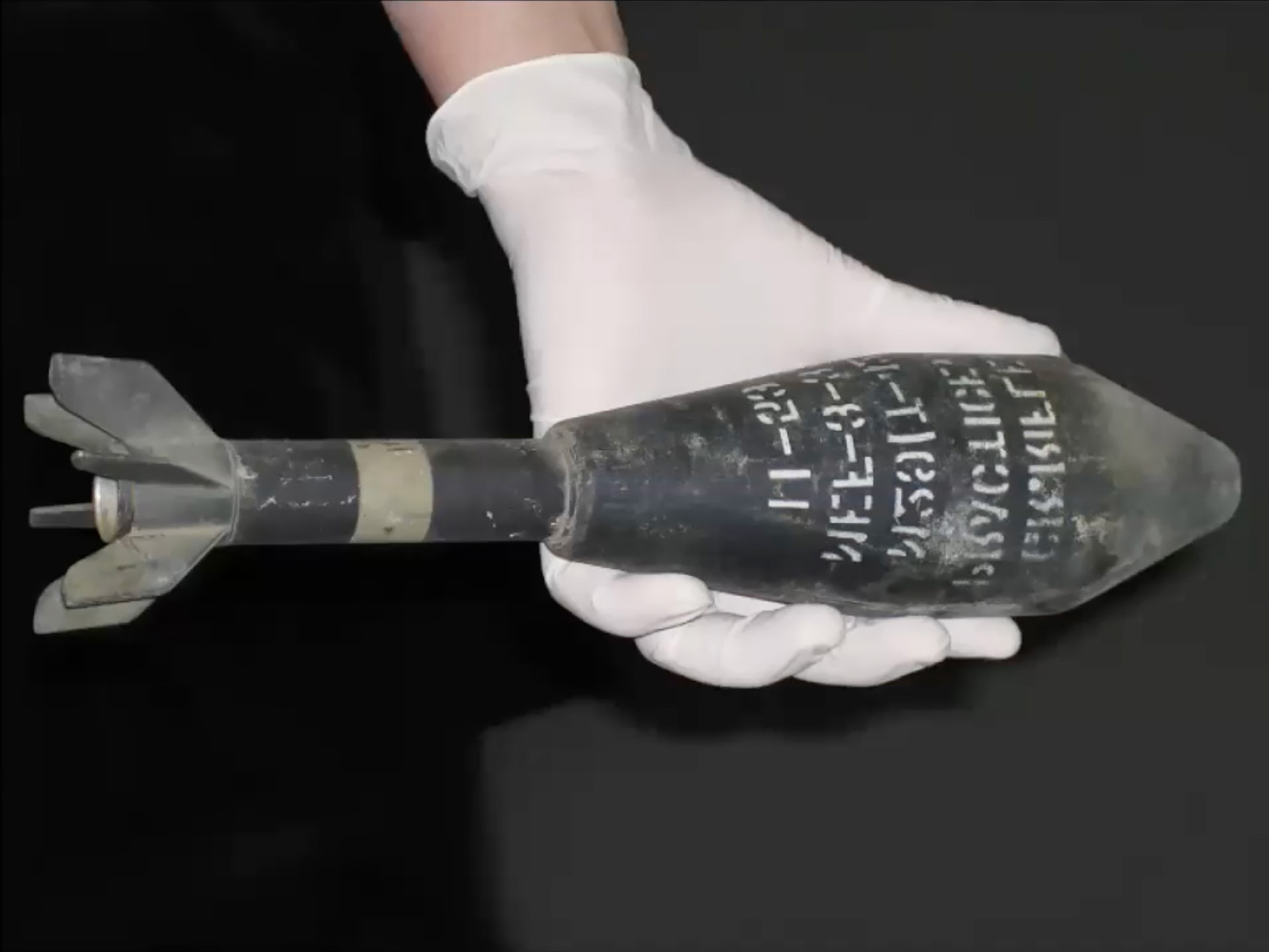
Russia’s military invasion of Ukraine on February 24, 2022 took the world by surprise. Our contemporary world is beset by international conflicts, wars, economic difficulties, migration issues, and other constant problems. How have artists who lived during disturbing times in history confronted these themes? On August 8, 2022, Amsterdam-based art historian, critic, and independent curator Saskia Bos made a talk entitled “Teaching Art in Times of Armed Conflict. The following are excerpts from the talk.
Edited by Ishii Jun’ichiro (ICA Kyoto)
In the coming half hour, I will mainly go over the highlights of art historical importance, things that I researched, but also covering contemporary art. I think I end somewhere not too contemporary I think my latest slide is already from 20 years ago, but given the fact that I start with 1070, the talk spans almost a thousand years of art.
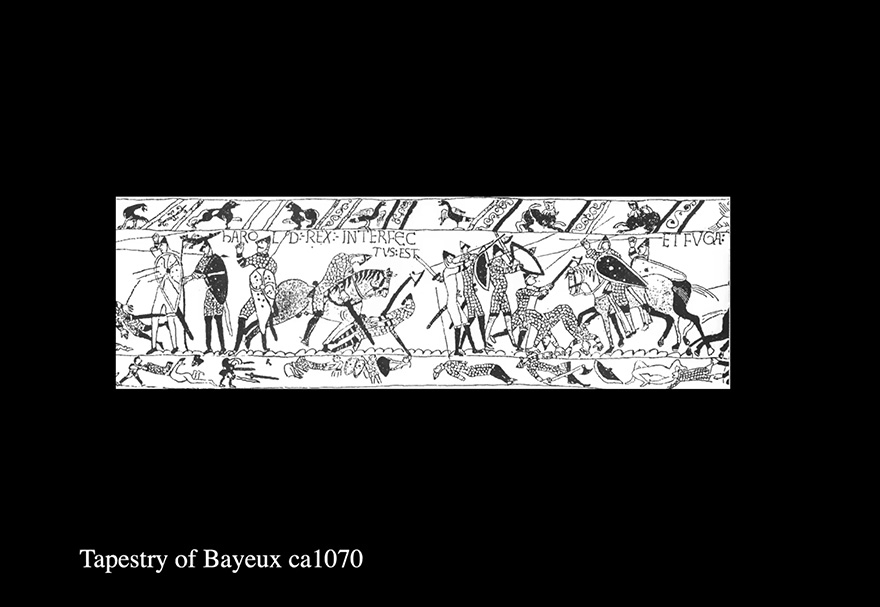
The «Tapestry of Bayeux» in Western art, one of the most early and beautiful and also horrendous “depictions” you could say. But it’s a tapestry, do you say “depiction”? Well, it is visualizing fictions of crusades, of killings in the name of Christ.
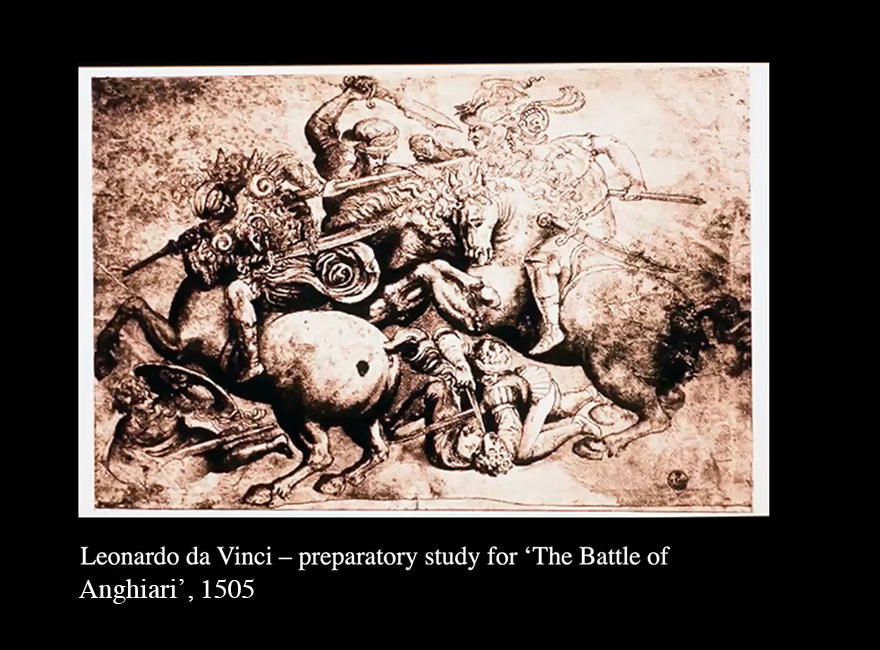
This is a preparatory study for a painting that they never found. The question is, even if Leonardo da Vinci ever made a painting or only the preparatory studies of the «Battle of Anghiari». The year is 1505.
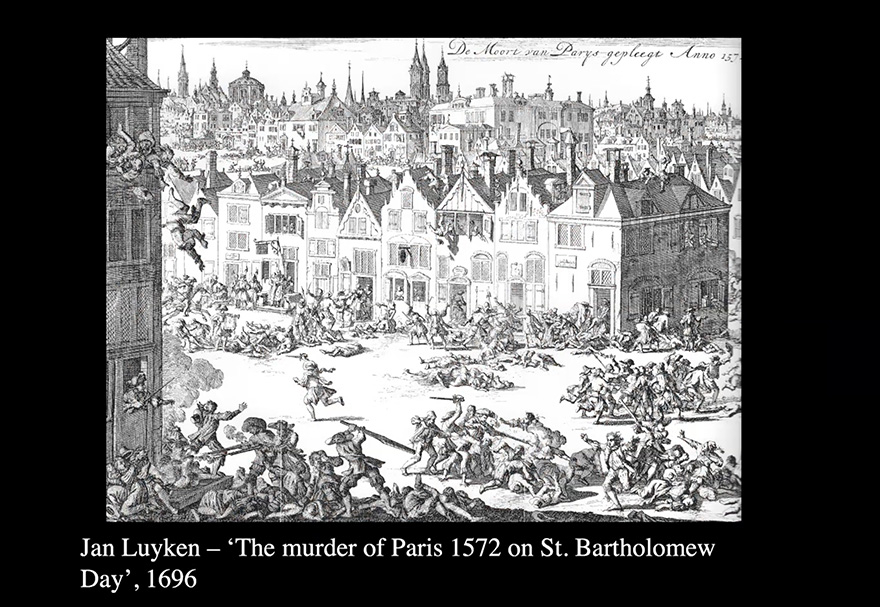
This is Jan Luyken, a Dutch artist who in 1696, I don’t know for what reason, goes back to the murder of Paris, which happened in 1572. More than 120 years before he was making this drawing, and it is the murder on St. Bartholomew’s Day, and that is the day that in Paris, a lot of Catholics were killing Protestants and Huguenots. Huguenots or Protestants who are then fleeing and they were going to Holland because the country was nicer to Protestants than the Catholics in Paris.
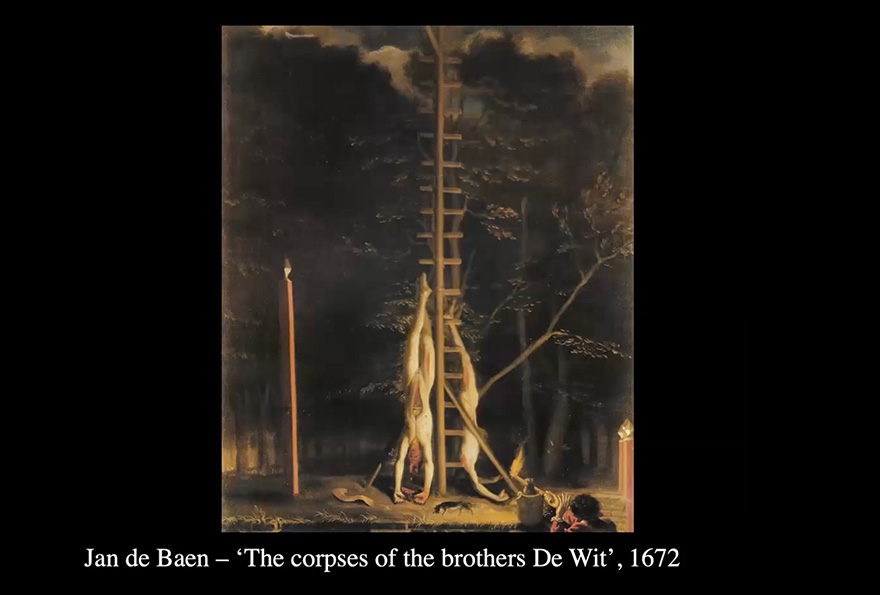
This is one of the most gruesome paintings ever made. It is part of the collection of the Rijksmuseum in Amsterdam, but it’s hardly ever exhibited because it shows the corpses that were also decapitated and opened and they took the intestines away for some reason.
They were the Brothers De Witt who were killed, who were Republicans, who were against the Orangists, and the Orangists were those who were with the king, the Princes of Orange. At that time, we didn’t have a king yet, but we had Princes of Orange, who are also very much alike, but there were two opposing forces. Amsterdam was very much with the Republicans and then half the Hague was very much, it’s still the case now, where they’ve had the Orangists who live there. That battle happened in 1672 when all the other countries especially Louis XIV was coming towards Holland.
Holland was lost and instead of anticipating that the Brothers De Witt, who were governors, who were in the government at that time, were lynched and killed because they thought it was their fault that they didn’t anticipate that Louis XIV, was coming with his army to the Netherlands.

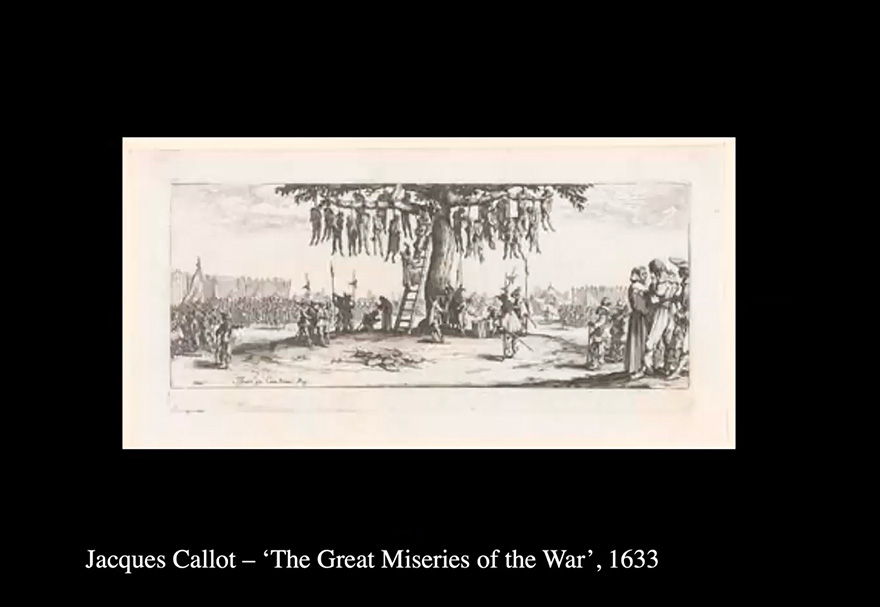
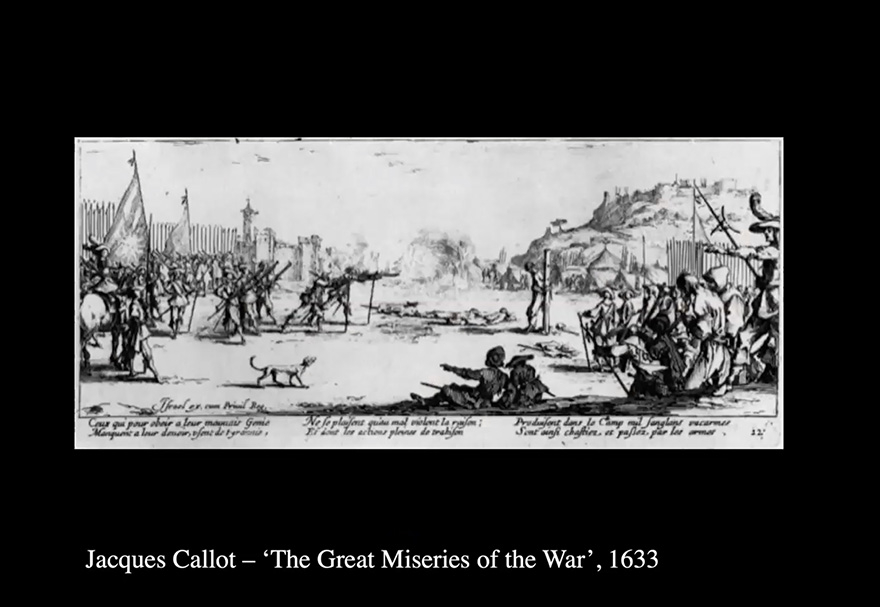

1633, «The Great Miseries of the War». We see soldiers rampage, people arrested, people executed up in the trees, hanged.
This is by French, Jacques Callot, there are 18 etchings, and only 8 by 18 centimeters. And they were very important for the famous Spanish, Francisco de Goya.
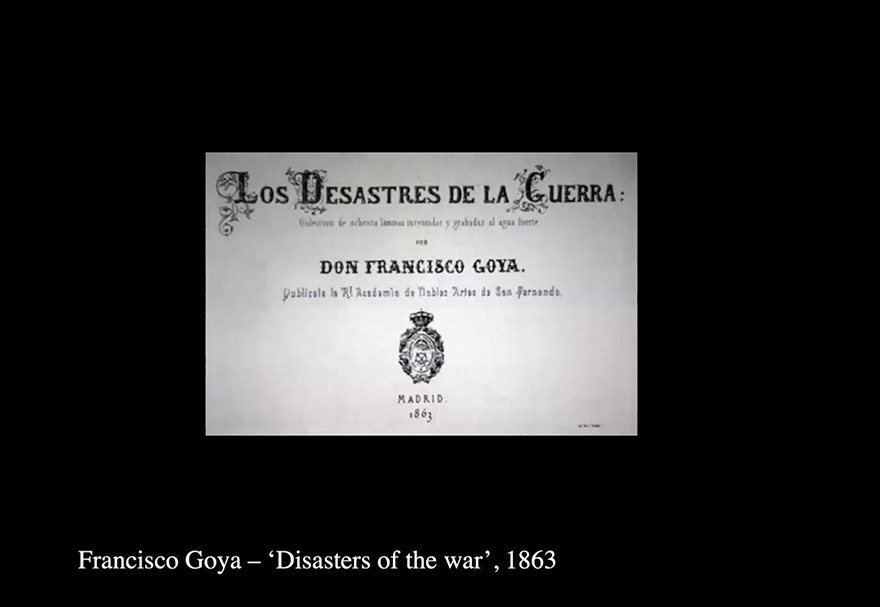
His famous series of drawings and aquatint, «Disasters of the War».
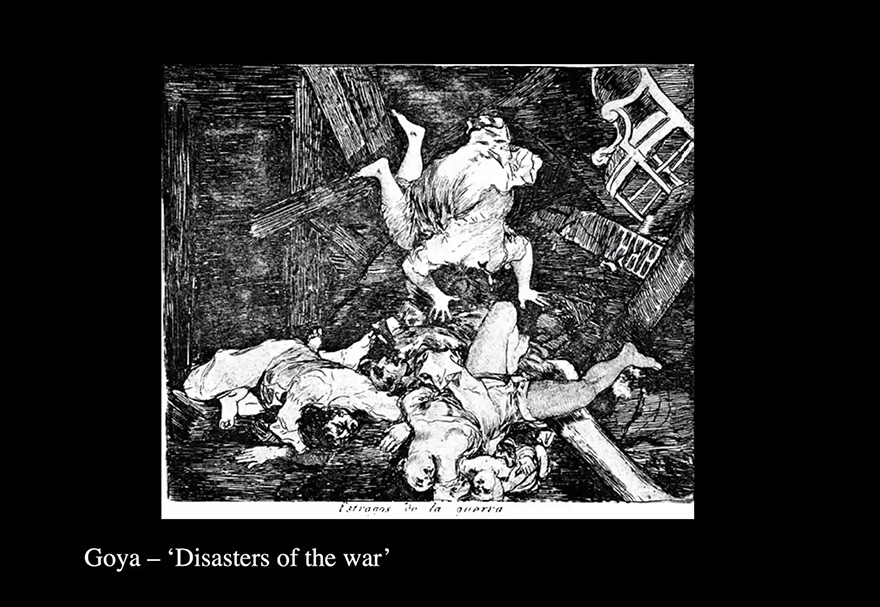
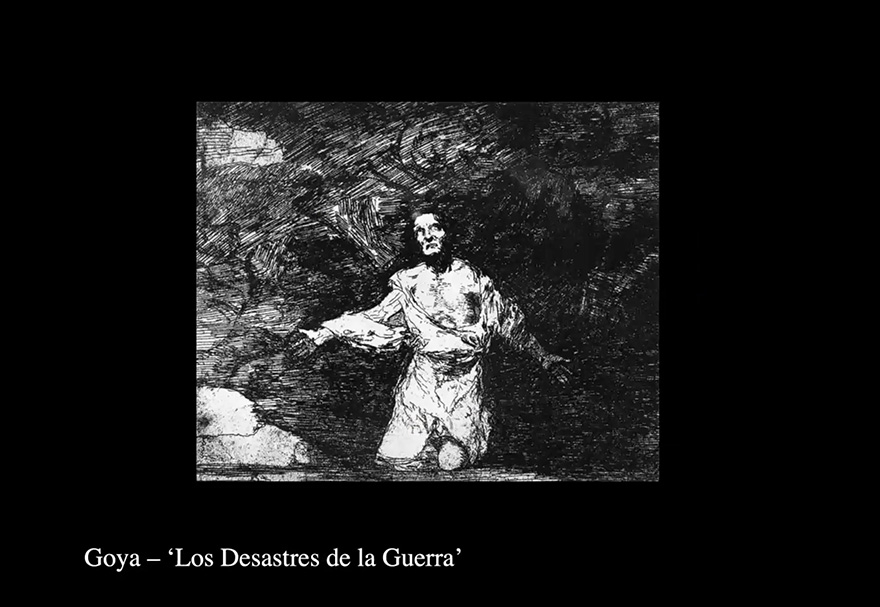
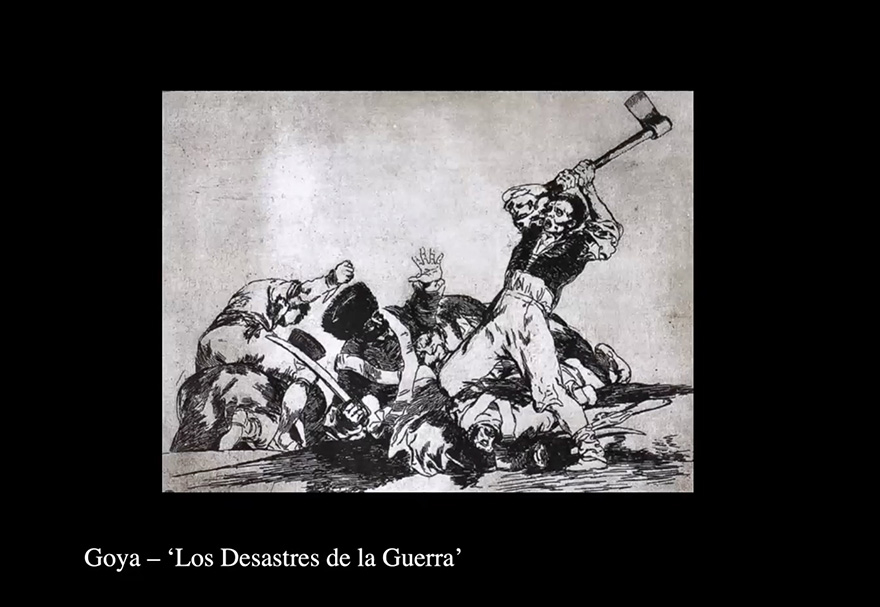
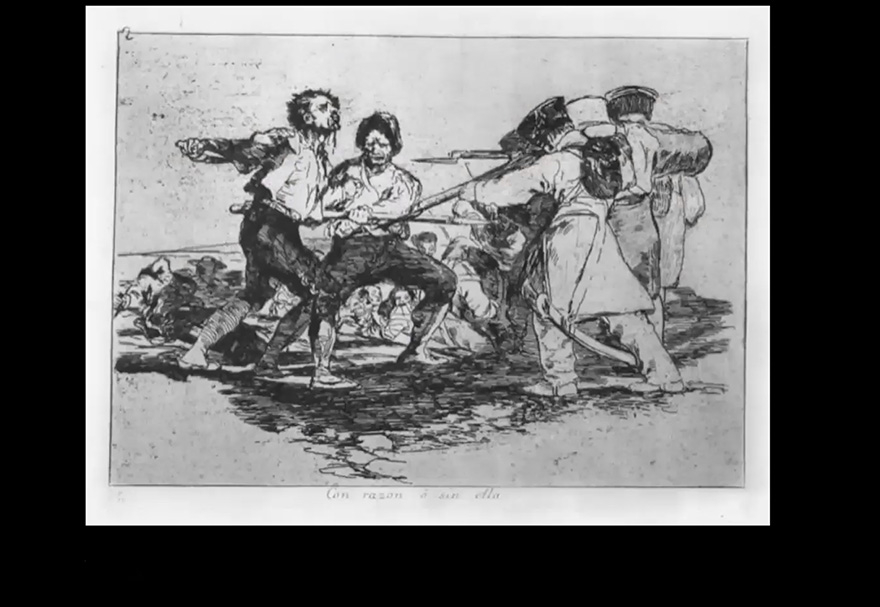
Don’t forget that he was depicting Napoleon who was with his troops killing his own countrymen. Again, there was the Bourbon family, the kings, and you have Republicans on the other side already in the 19th century.

Of course, Napoleon in the meantime, after his revolution had become almost an emperor and later became emperor, but he was like Putin now grabbing all the countries around him. Italy, Holland– he took Holland as well and he took Spain.
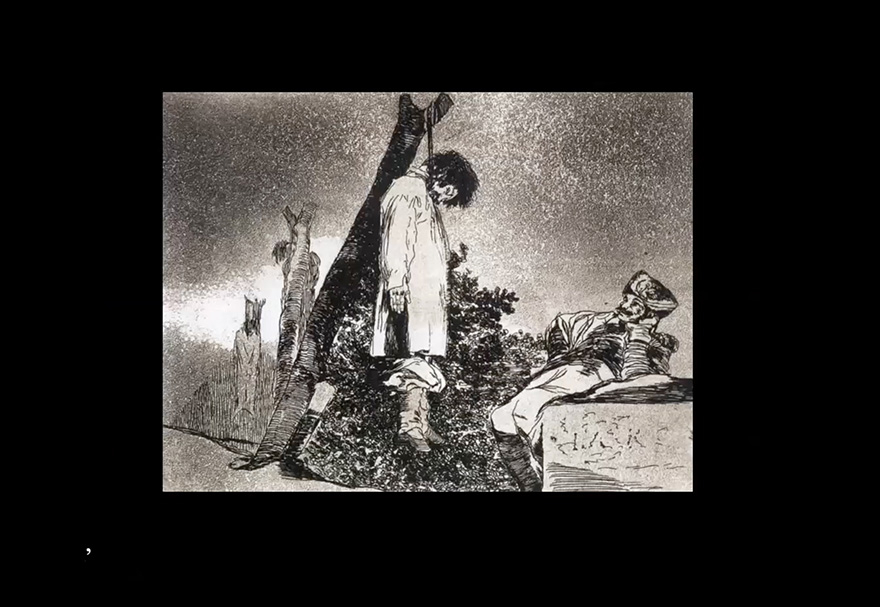
You see a soldier, it could either be from the Bourbon origin themselves in Spain because they were siding with the French, or it could be just a French soldier who almost seems to enjoy the fact that this person was hanged.
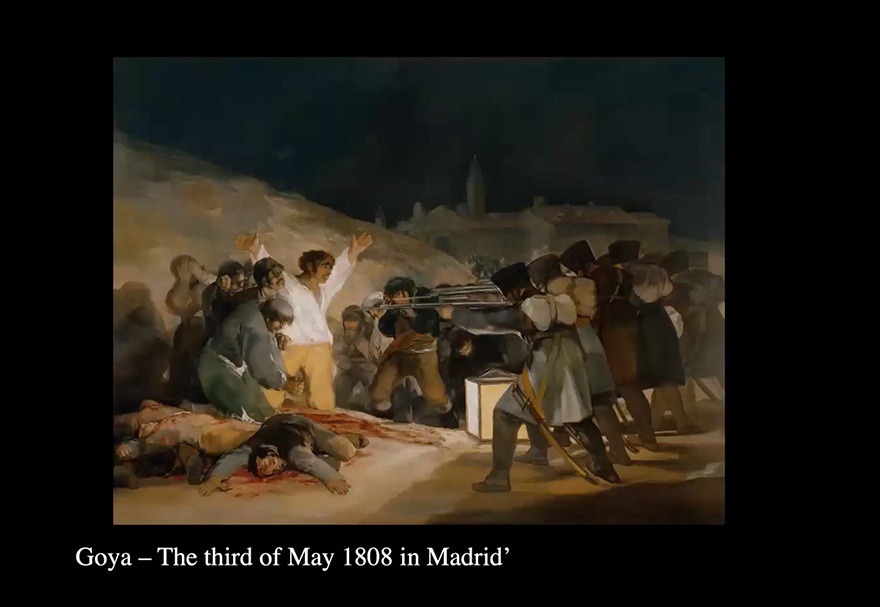
«Third of May 1808 in Madrid» Spanish resistance killed.
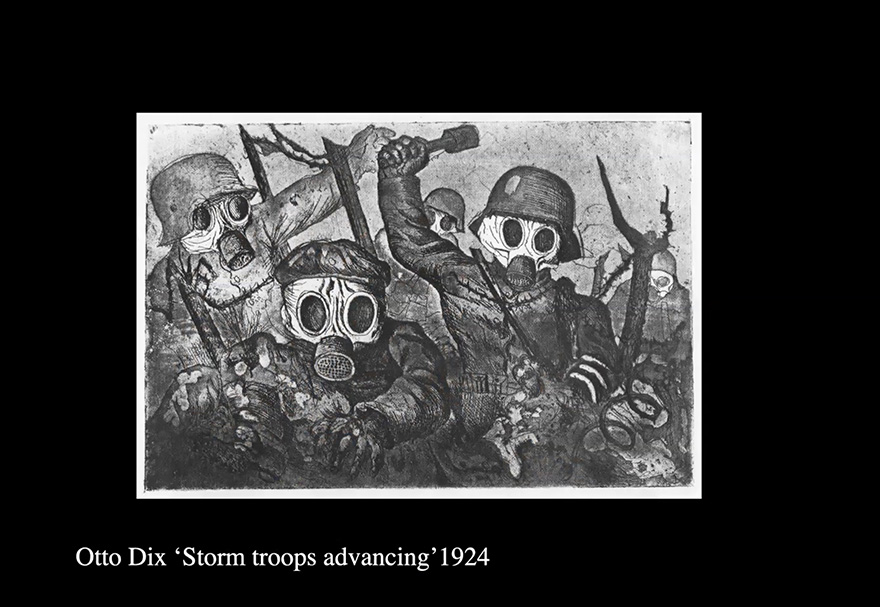
Otto Dix 1924, reflecting on the First World War.
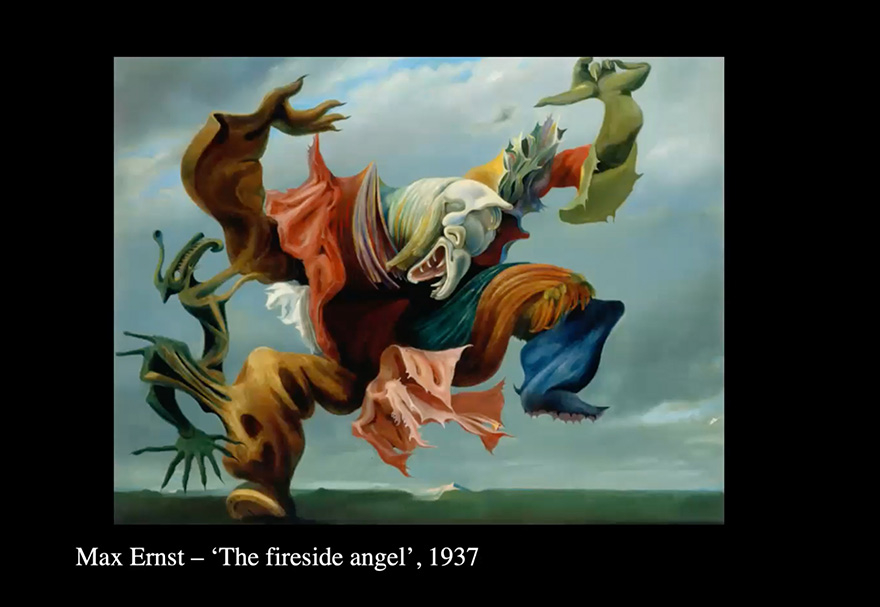
1937, we’re almost in the Spanish Civil War. Max Ernst, who is originally French-Swiss, makes «The Fireside Angel» in 1937 because he is already aware that the fascist troops in Germany are helping the conservatives in Spain. Spain later becomes the Francoist Spain but it’s not yet the case.
For me, this is a painting that gives me the goosebumps. Goosebumps because it is completely so awful that the craziness of war. It’s almost about becoming crazy and that is what being depicted so well.
You know that the surrealists, after having read Freud and they knew everything about the unconscious, they were really able to talk to those deep emotions. Freud helped us all analyze that, but the painters like Max Ernst’s and others of surrealism are masters in doing that, and for me, this is a frightening painting.
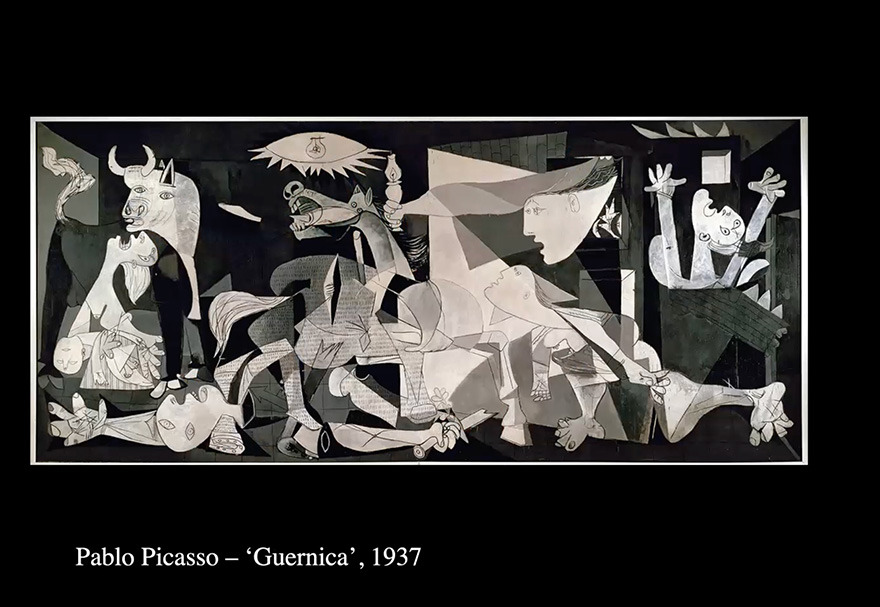
This is the same year, 1937, Picasso, «Guernica». Guernica is the village where the bomb came down.
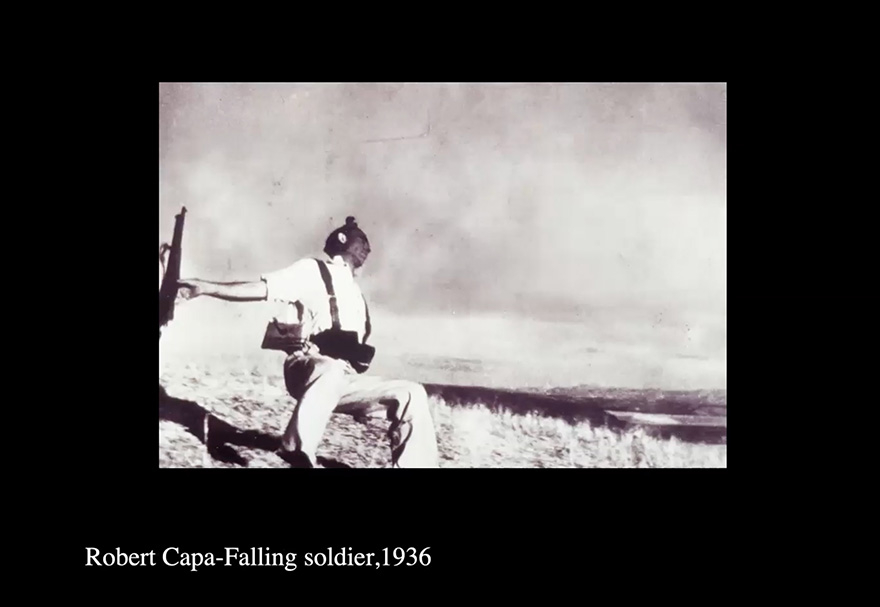
This is 1936, it’s also about Spanish Civil War, but it’s a year earlier.
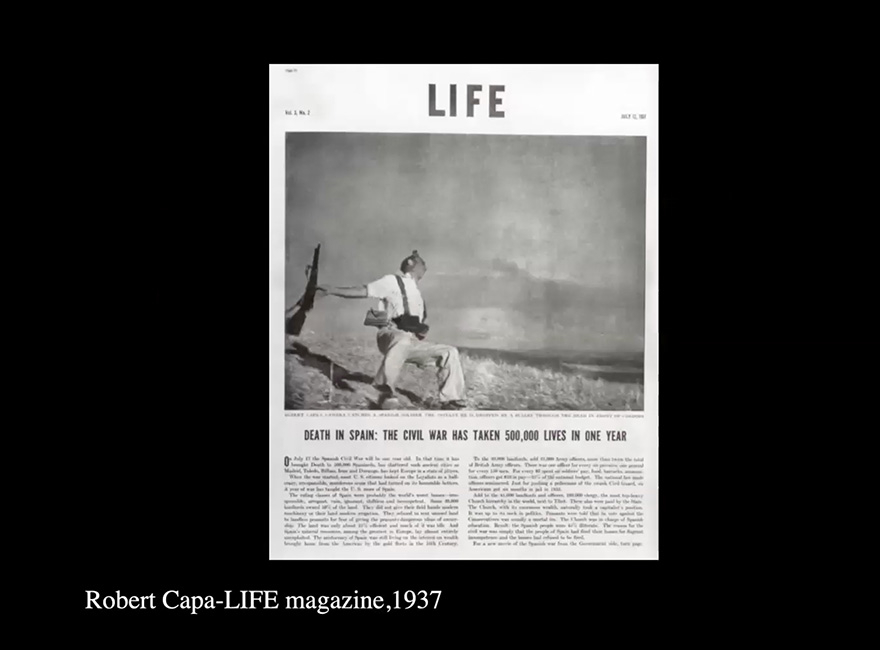
The question is here, it is published in Life Magazine in 1937. The question about this picture by Robert Capa is, and we analyze it at length in the (Kyoto University of Arts, graduate school, Global Seminar) class, is it real or is it posed?
In 2009, articles came out only then that meant that this may have been a posed picture. We will get to a few other artworks later where staging is important.
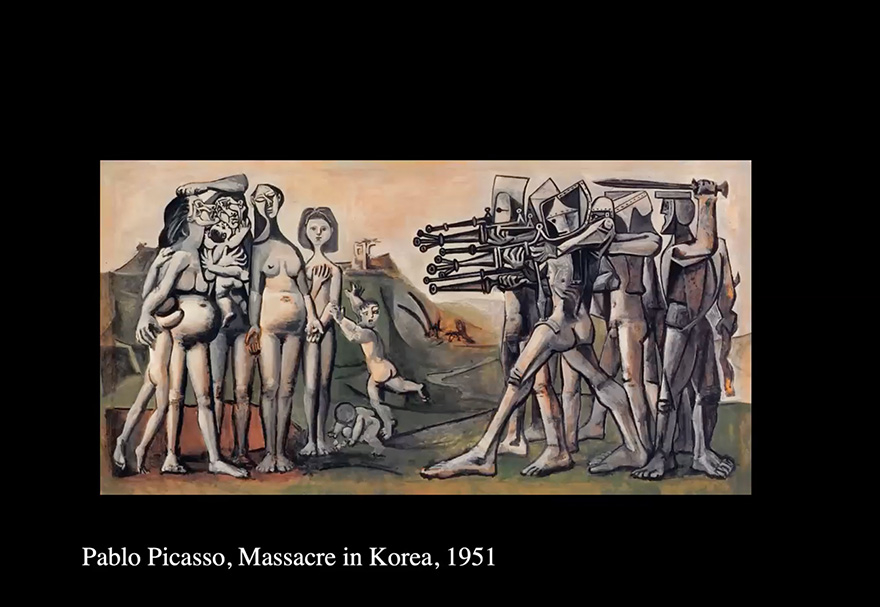
This is a very early reaction to the Korean War by Picasso. And this is the Massacre in Korea.
As you can see, there is an influence, we think, of a painting he must have known by Goya (* see «Third of May 1808 in Madrid» ) and there’s even one in between by Manet that looks more like Goya. We think that this painting was maybe influenced by both Manet, Goya and that Picasso did this but it’s very different from «Guernica».
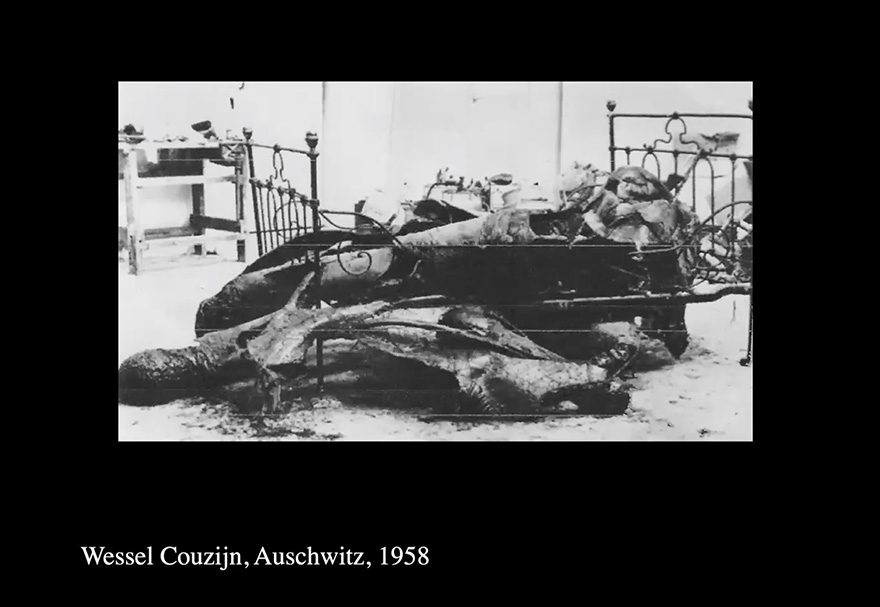
This is «Auschwitz». 1958. Wessel Couzijn is the maker of the sculpture.
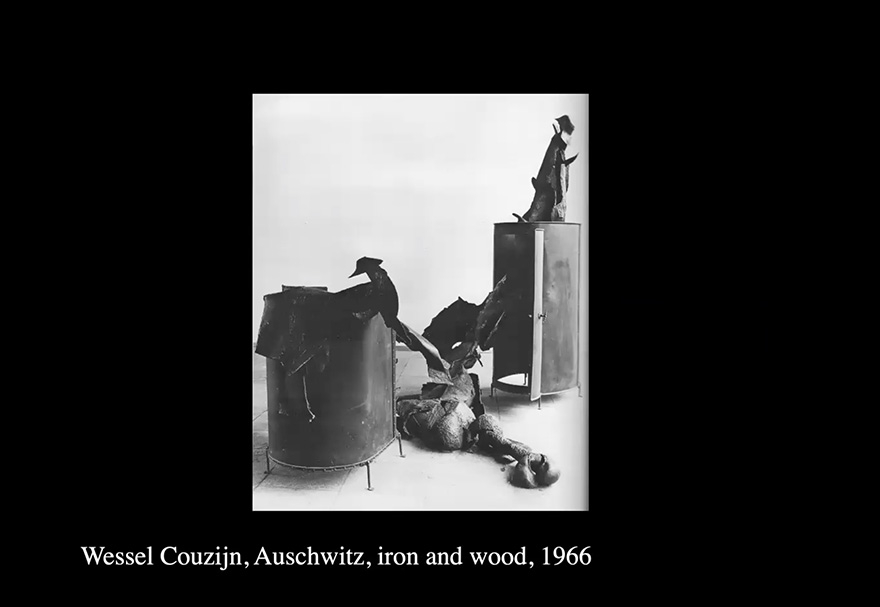
This is iron and wood 1966 also called «Auschwitz».
Everybody here knows what Auschwitz is. This artist was one of the few who was capable to face this and try to make art out of it. It is one of the most difficult things there is, to try to make art out of something so unspeakable. When Hiroshima happened, it was not possible. Try to make art about 9/11, it is very difficult. Try to make art about Auschwitz, it’s impossible.
This is an abstract expressionist. He’s a very good sculptor, but nobody ever exhibits the work mainly because it’s so heavy. It’s like that one painting with the corpses. (* see «The corpses of the brothers De Wit’» ) It’s very hard to exhibit and we don’t see it in lectures very often either.
to the “Teaching Art in Times of Armed Conflict: Part 2“
Saskia Bos (Art Historian, Curator, Critic)
Bos is an independent curator and critic of contemporary art, living in Amsterdam, the Netherlands. She has a long experience in exhibition making, teaching and in arts administration both in Europe and in the US; she is also the founding director of De Appel’s curatorial program, and has been the Dean of the School of Art at the Cooper Union, New York, between 2005 and 2016. She is currently on the Board of CIMAM(International Committee for Museums and Collections of Modern Art).
Bos has produced many international projects and collaborated with many institutions: one of her first international projects was editing the catalogues for Documenta 7 in Kassel and assisting the curatorial team of Rudi Fuchs. Other projects include: Sonsbeek ’86, Arnhem, The Netherlands; Venice Biennale 1988 (Co-curator of Aperto); Biennale Sao Paulo (Dutch Commissioner) 1998; 2nd Berlin Biennial, 2001 and 3rd Skulptur Biënnale Münsterland, 2003.
In 2009 she curated the Dutch pavilion at the Venice Biennale.
* This talk was held at the Kyoto University of Arts online on August 8, 2022.